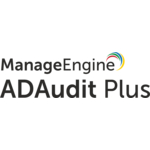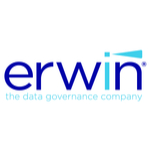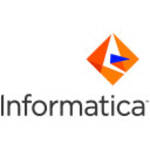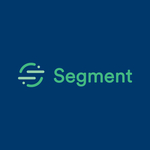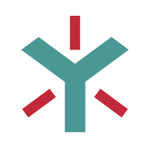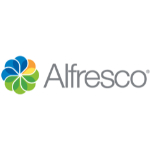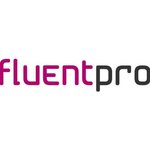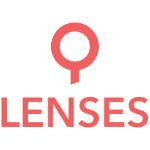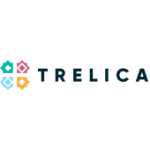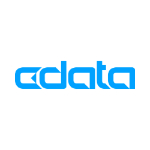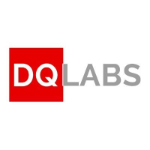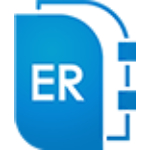TechnologyCounter provides genuine, unbiased real user reviews to help buyers make informed decisions. We may earn a referral fee when you purchase through our links, at no extra cost to you.
List of 15 Best Data Governance Tools
Showing 1 - 15 of 43 productsManageEngine ADAudit Plus, your go-to solution for simplified is a auditing of Active Directory environments. Designed to streamline the entire auditing process, our software offers a comprehensive array of features to help you monitor, secure, and r...Read ManageEngine ADAudit Plus Reviews
Collibra is a data governance and cataloging software that helps organizations manage their data assets effectively. With its advanced features, Collibra enables businesses to find, understand, and trust their data, thereby making informed decisions...Read Collibra Reviews
Erwin Data Modeler is a software designed for data modeling and management. Developed by erwin Inc., it offers a reliable is a solution for businesses of all sizes to design, visualize, and communicate their data structures. With its user-friendly in...Read erwin Data Modeler Reviews
Informatica MDM, a powerful and versatile data management platform designed to help businesses streamline and maximize the use of their data. With its advanced capabilities and user-friendly interface, Informatica MDM empowers organizations to make d...Read Informatica MDM Reviews
Jedox is a solution for all your data management needs. From budgeting and planning to data analysis and collaboration, Jedox offers a seamless platform to streamline your business processes. With its user-friendly interface features, Jedox is the go...Read Jedox Reviews
Segment is a software that revolutionizes the way you manage your data. With its advanced capabilities, it allows you to effectively organize and analyze your customer information, enabling you to make data-driven decisions with ease. Say goodbye to...Read Segment Reviews
Blueprint OneWorld is a solution for managing corporate governance and compliance. With its advanced features and user-friendly interface, Blueprint OneWorld streamlines processes, reduces risk, and enhances organizational efficiency. Its powerful to...Read Blueprint OneWorld Reviews
Egnyte is a versatile file sharing and storage platform that streamlines collaboration within organizations. With its user-friendly interface and robust security features, Egnyte offers seamless access to files from any device, keeping teams connecte...Read Egnyte Reviews
Alfresco is a and versatile content management system that simplifies the management and collaboration of documents, workflows, and processes. With its user-friendly interface is a tools, Alfresco is the go-to solution for individuals and businesses...Read Alfresco Reviews
FluentPro G. A. Suite is a web-based Data Governance Software designed for use by Agencies or SMEs. It offers a complete range of solutions for managing data and processes, all conveniently accessible through a single platform. With FluentPro G. A...Read FluentPro G. A. Suite Reviews
Lenses is a software designed to revolutionize the way you view and manage your data. With its innovative capabilities, Lenses offers a streamlined is a approach to data management, making complex tasks as simple as a click. Say goodbye to tedious pr...Read Lenses Reviews
Trelica is a tool for all your project management needs. Developed with precision and efficiency in mind, Trelica serves as the ideal software solution for businesses of all sizes. With its user-friendly interface and seamless features, Trelica makes...Read Trelica Reviews
CData API Server is a tool designed to simplify your data integration process. With its intuitive interface features, managing and accessing diverse data sources has never been easier. Seamlessly connect your applications to any data repository and u...Read CData API Server Reviews
DQLabs is a state-of-the-art data management platform that empowers businesses to make informed decisions and drive growth. With its intuitive interface features, DQLabs streamlines the data process, allowing companies to unlock the full potential of...Read DQLabs Reviews
ERBuilder Data Modeler is an innovative and powerful tool that allows users to easily design and manage their data models. With its user-friendly interface and versatile features, ERBuilder makes database designing a seamless is a process. Say goodby...Read ERBuilder Data Modeler Reviews
- What Is Data Governance Tools?
- Top Reasons Why Businesses Need Data Governance Tools?
- What Are the Top Key Features of Data Governance Tools?
- What Are the Top Benefits of Data Governance Tools?
- What Are the Steps to Choose the Right Data Governance Tools?
- What Are the Types of Data Governance Tools for Different Industries?
- What Are the Technology Trends for Best Data Governance Tools?
- What Are the Deployment Options for Data Governance Tools?
What Is Data Governance Tools?
Data governance tools that businesses employ to guarantee that they are talking about the same data pieces and that these elements are maintained accurately and securely across the organization. Metadata is tracked and controlled by data governance systems.
Metadata is information about a data element that describes its provenance, who edited it, where the original document originated from, and where the data element is currently kept. Data governance technologies often allow you to develop, create, and enforce processes to help with data management.
They can be used to build and describe data models for various reasons, to provide an interface for editing and tracking data items, and to aid in the maintenance of data quality, consistency, and security.
These technologies can deliver data information to the business, making it easier to notice errors and inconsistencies, as well as highlight data items that need to be updated. Data governance systems also feature data lineage and versioning capabilities, which allow businesses to trace data items back to their sources and track changes made to the data.
Organizations can use these technologies to guarantee that data has integrity and correctness, is securely handled, and is up to date. This type of tool is essential in organizations that rely significantly on data to make decisions.
Top Reasons Why Businesses Need Data Governance Tools?
1. Automate data lineage tracking: Data governance technologies collect and store data from a variety of sources to improve visibility and understanding of how data is used throughout the company.
2. Create and enforce role-based data policies: Businesses can use data governance technologies to design access rules and roles for their data, develop enforcement for those roles, and monitor access.
3. Increase data accuracy and quality: Data governance technologies provide visibility into data sources and ensure accuracy by enforcing data cleanliness and completeness requirements.
4. Grow trust in data: Top data governance tools improve the trustworthiness of data for internal and external stakeholders by recording actions and reconstructions in visible, defined audit trails.
5. Encourage data sharing: Data governance technologies incentivize data sharing by offering a secure and open environment for cooperation and data shuffle between different teams.
6. Establish a clear data ownership: Data governance tools assist firms in determining who has access to data and who is in charge of developing or updating it.
7. Improve data operations: Businesses can use data governance technologies to set clear data standards, automate data processes, and reduce the costs of data-driven choices.
8. Enable data-driven insights: Big data governance tools enable businesses to gain fresh insights from their data and make better decisions.
9. Uncover hidden data relations: The best data governance software reveals the relationships between data sources, allowing greater value to be extracted from current data sets.
10. Accelerate regulatory compliance: Data governance technologies, depending on the nature of the data, can assist firms in remaining compliant with industry-specific or jurisdiction-specific laws and regulations.
11. Reduce operational costs: Data governance technologies automate the data request and transfer process, minimizing duplication and ensuring consistency across teams.
12. Improve data security: Data governance technologies assist businesses in meeting industry or government security requirements by offering access to audit trails and data usage statistics.
13. Foster data-driven culture: The best data governance tools foster a data-driven culture by making it easy to access and use data.
14. Facilitate decision-making: Data governance technologies enable businesses to organise data, laying the groundwork for data-driven decision-making.
15. Improve data ethics: Top data governance tools ensure that data is acquired, used, and shared in an ethical manner, and they enable the establishment of ethical data access and usage controls.
What Are the Top Key Features of Data Governance Tools?
The top key features of data governance tools include:
1. Data Quality Management: Data governance solutions provide data quality monitoring and management by building a system of checks and warnings to assure data accuracy.
2. Data Quality Evaluation: These tools facilitate the ability of companies to conduct data quality assessments and detect instances of data integrity problems. They offer functionalities such as data profiling, matching, and document comparison.
3. Regulatory Compliance: Top data governance tools play a crucial role in assisting organizations in maintaining regulatory compliance. These tools facilitate the establishment of a comprehensive perspective on data, as well as the creation, monitoring, and auditing of procedures that adhere to regulatory norms.
4. Data Classification: The process of data classification enables organizations to enhance their comprehension of data and allocate appropriate levels of protection and access.
5. Security and Privacy Enforcement: Data governance technologies offer enterprises the capability to enforce security and privacy protocols on their data.
6. Metadata Management: The utilization of metadata management skills enables organizations to effectively arrange and administer their data, incorporating functionalities such as asset tracking, version control, and hierarchical structuring.
7. Data Governance Process Automation: The best data governance software provides businesses with automated workflows that facilitate the efficient and precise creation, execution, and reporting of data governance processes.
8. Data Lifecycle Tracking: These solutions facilitate the tracking of data from its inception through its removal, as well as the monitoring of data usage throughout its lifecycle within companies.
What Are the Top Benefits of Data Governance Tools?
Top data governance tools provide a wide range of benefits to organizations.
1. Improved Data Quality: Automated governance systems have the capacity to guarantee the accuracy, consistency, and currency of data. Various tools, such as data profiling, data cleansing, and quality metrics, might be utilized in order to guarantee adherence to regulations and precision.
2. Increased Efficiency: Governance solutions aid organizations in optimizing their operational efficiency through the identification and prevention of data inaccuracies prior to their occurrence. Automated processes have been found to enhance productivity and reduce the need for human labor, while also offering the advantage of facilitating prompt repairs and modifications.
3. Increased Collaboration: Cloud data governance tools facilitate secure collaboration among teams in performing data-related tasks. This promotes the unrestricted exchange of information and helps the dissemination of valuable insights.
4. Improved Regulatory Compliance: Automated governance systems have the capacity to enforce compliance with regulatory norms and standards within businesses. Data masking and role-based access control are essential tools that empower data owners to effectively manage data access, so ensuring the right protection and security measures are in place.
5. Increased Visibility: Governance solutions provide firms with enhanced access to detailed insights pertaining to the data they oversee. This encompasses the provision of convenient access to information regarding data ownership, lineage, availability, and usage, hence facilitating companies in acquiring valuable insights into their data environment.
6. Enhanced Data Security: The utilization of automated data governance systems has the potential to enhance the security of data. The inclusion of monitoring and audit capabilities within businesses enables them to exercise control over their sensitive data, while also notifying users in the event of any unwanted access attempts.
What Are the Steps to Choose the Right Data Governance Tools?
1. Gain a comprehensive understanding of the data governance requirements inside your firm. The evaluation should encompass an analysis of the data that necessitates capturing and storing, the many types of decisions that are associated with the data, the stakeholders involved in the data, the access requirements for the data, and the concerns pertaining to compliance and security.
2. It is imperative to take into account the pre-existing infrastructure and technologies. In order to effectively manage data within your systems, it is important to possess a comprehensive understanding of data storage mechanisms, data flow processes, and the repertoire of the best data governance software now accessible.
3. Conduct a comprehensive investigation of potential providers of solutions. Conduct an investigation on the characteristics of cloud data governance tools provided by different vendors, as well as the corresponding expenses linked to each product. Examine internet evaluations and client feedback in order to gain a more comprehensive understanding of the available possibilities.
4. When analyzing a system or solution, it is important to take into account the concepts of scalability and integration. Choose a solution that possesses the capability to expand proportionally with your organization and seamlessly interact with pre-existing systems and apps. It is imperative to ensure that the tool possesses sufficient flexibility to accommodate evolving requirements.
5. It is advisable to seek technical assistance. It is imperative to ensure that the service provider delivers dependable technical support and customer service alternatives to address any inquiries or aid in using the product.
6. The process involves conducting tests and afterwards selecting a suitable tool. Conduct a comprehensive evaluation of the tools under consideration in order to validate their functionalities and assess their effectiveness. After conducting thorough testing, it is imperative to carefully choose the option that aligns most effectively with your organization's data governance requirements and financial constraints.
What Are the Types of Data Governance Tools for Different Industries?
The applicability of the best data governance tools varies across industries due to the distinct needs and requirements of each industry. In many industries, a range of data governance technologies can often be classified as being accessible.
1. Data Quality Tools – The purpose of this system is to effectively discern, oversee, and enhance the caliber of data. Organizations are commonly equipped with a comprehensive collection of metrics and reports, which serve the purpose of facilitating the analysis of data quality and the detection of inconsistencies.
2. Data Privacy Tools – The purpose of the best data governance software is to offer a secure and compliant method for storing and exchanging data. Commonly found in various systems, these features frequently encompass encryption, access control, and auditing capabilities.
3. Data Governance Platforms – The purpose of this system is to establish a centralized database for the storage and management of policy documents, procedural guidelines, and workflow processes. These tools facilitate a collaborative environment for data governance teams to establish and oversee data governance policies.
4. Data Lineage Tools – The purpose of data governance software is to visually represent, trace, and monitor the source and historical progression of data. These tools offer a comprehensive analysis of the data lifecycle and guarantee the preservation of data integrity.
5. Metadata Management Platforms – The purpose of this system is to collect and oversee information pertaining to data. Metadata Management Platforms facilitate the documentation and administration of data properties within businesses, encompassing aspects such as data ownership, intended utilization, and security protocols, across the whole lifespan of the data.
6. Data Security Tools – The primary objective of this system is to safeguard data by preventing unauthorized access and mitigating the risk of hostile assaults. The aforementioned tools encompass functionalities such as access control, authentication, and data leakage protection.
What Are the Technology Trends for Best Data Governance Tools?
In recent times, there has been a growing emphasis on the significance of data governance, accompanied by a wide range of solutions that can aid in the management and safeguarding of data assets, while also mitigating operating expenses.
Some of the most commonly utilized the best data governance tools in contemporary practice are:
1. Data Quality Platforms: These technologies facilitate the assessment, tracking, analysis, and rectification of data quality within businesses. This holds particular significance for firms that are tasked with the management of customer data.
2. Data Access Control Tools: These tools facilitate the management of data creation, utilization, and accessibility within the organizational setting. This facilitates enhanced comprehension for companies about the protection, utilization, and sharing of data across diverse users.
3. Cloud Data Governance Tools: These technologies facilitate the establishment and administration of data governance policies within businesses, encompassing aspects such as data accessibility permissions, permissible data usage, and data archiving timelines. This facilitates the adherence of firms to regulatory and business norms in order to ensure compliance.
4. Data Visualization Tools: Data visualization tools facilitate the expedient identification of patterns and trends within an organization's data. These solutions additionally facilitate firms in enhancing their ability to monitor and analyze data in a more efficient manner.
5. Machine Learning Platforms: Machine learning and artificial intelligence have gained significant traction in the field of data governance due to their capacity to automate data operations and expedite pattern recognition and discovery.
In general, the best data governance software are exerting a significant influence on the trajectory of data management in the foreseeable future. In light of the increasing significance of data protection and governance, it is imperative for companies to allocate resources towards acquiring appropriate technologies that safeguard their data and ensure adherence to relevant policies.
What Are the Deployment Options for Data Governance Tools?
The available deployment methods for the best data governance tools are contingent upon the specific data governance technology employed. In practice, data governance solutions can be implemented through three primary methods: on-site deployment, utilization of a cloud-based web service, or a hybrid strategy that combines elements of both.
On-site deployments encompass the installation and configuration of requisite data governance technologies on the server or computer infrastructure of an organization. This technique provides effective management for enterprises seeking to uphold stringent control over their data governance system, albeit potentially necessitating substantial resource allocation.
Cloud-based web applications often entail the deployment of the data governance system on a cloud provider or an alternative third-party server. The data governance software typically exhibits cost-effectiveness and necessitates minimal resource allocations. Nevertheless, the security and access control capabilities of cloud data governance tools may vary based on the chosen cloud provider, perhaps falling short of those provided by an on-site installation.
Hybrid-based approaches encompass the integration of both on-site and cloud-based applications. Hybridized methodologies have the potential to yield superior cost-effectiveness compared to on-premises implementations, while concurrently providing enhanced security measures and administrative oversight in comparison to cloud-based alternatives.
The available choices for implementing data governance technologies exhibit variability and are contingent upon the specific requirements and preferences of each company.
Organizations have the option to adopt big data governance tools through several means, such as on-site deployment, cloud-based web applications, or a hybrid strategy, depending on the exact tool being utilized.
